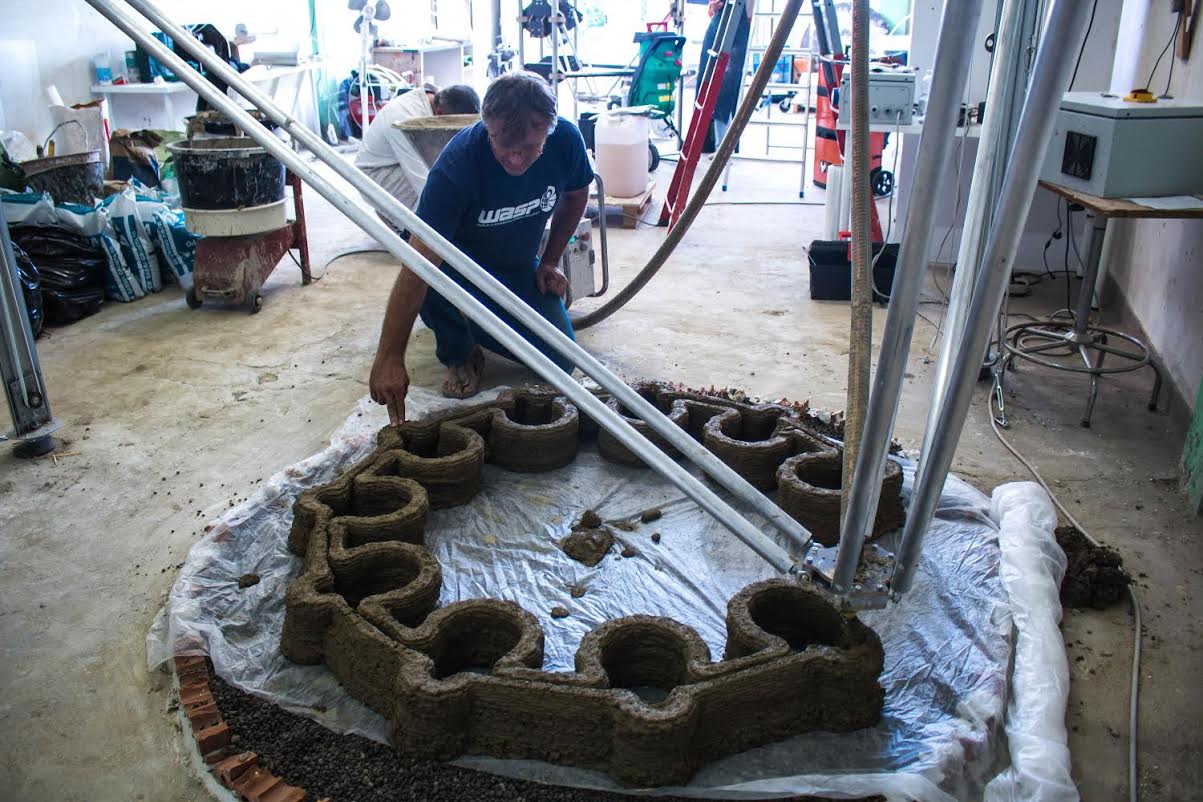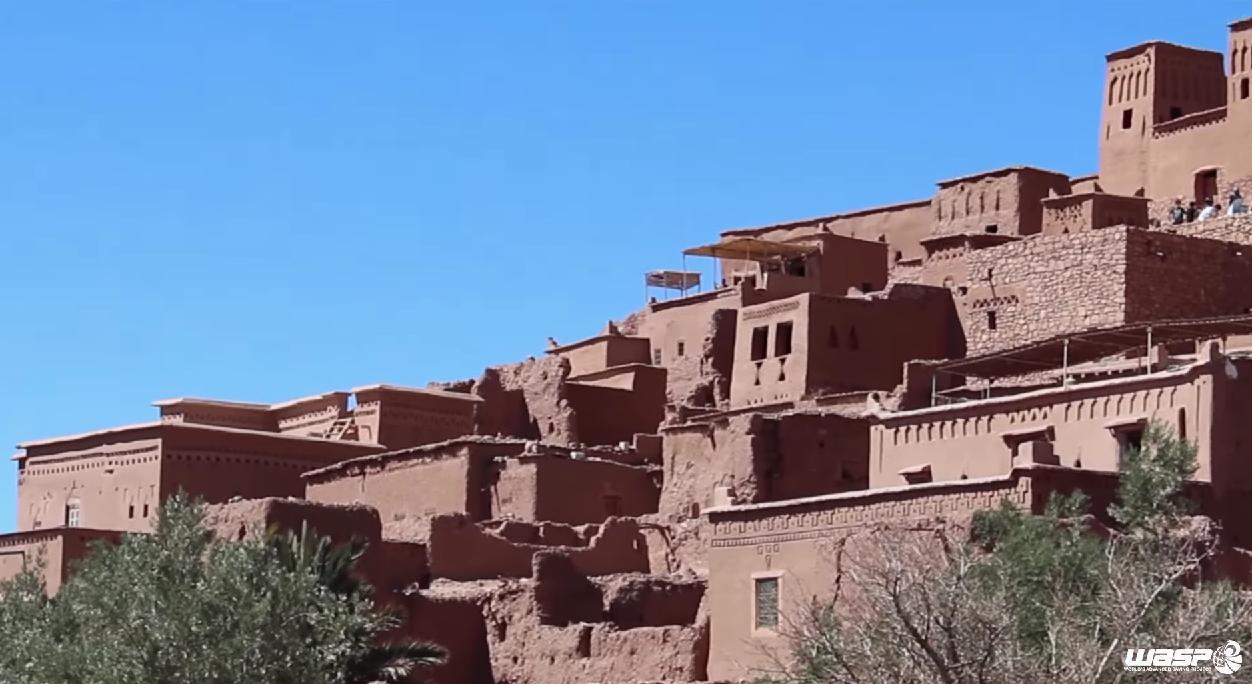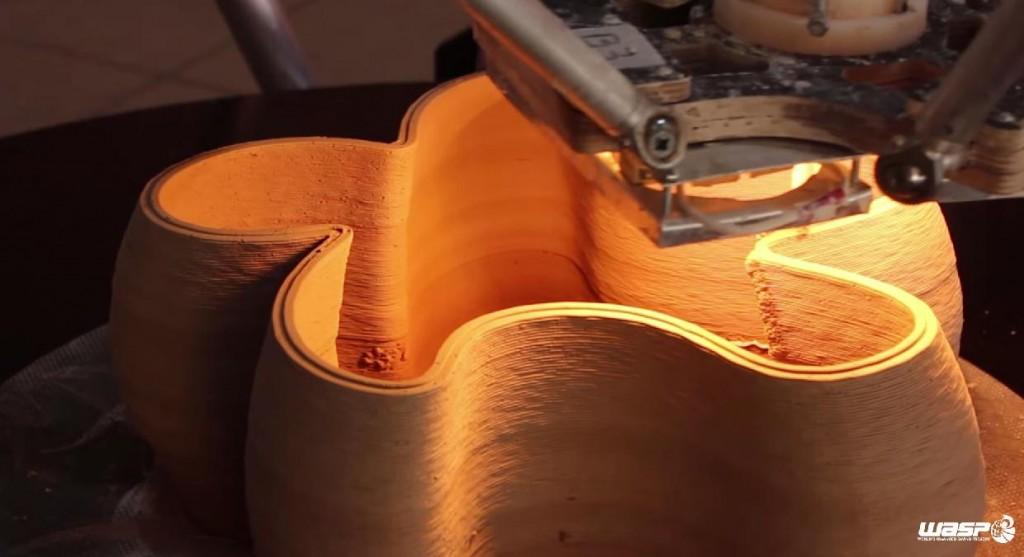WASP Plans to Demonstrate New 6 Meter Tall 3D House Printer This Week: Will 3D print houses in developing countries next!
Back in July, we broke a story about an Italian group called WASP, that had plans to 3D print homes in third world countries, using these countries’ native soils as print material. At the time, many people saw the idea as a good one, but the group had nothing to show, in order to prove that they would actually be able to pull this off.
Today, however, WASP Group has informed 3DPrint.com that they will be showing off this incredible technology at the Rome MakerFaire later this week. WASP has created a 6 meter tall (19.68ft) 3D printer that is able to take clay made from various local soils, and print out large structures. The group tells us that they are looking to solve the housing problems all throughout the world.
At the Rome MakerFaire, which starts on Friday, October 3rd, they will have on hand, a 4 meter tall scaled down version of this large 3D printer, and they will be proving that it is in fact possible to do what they claim. That is, creating housing for people throughout the world.
“We will print a mixture made of clay and sand,” explained Massimo Moretti, craftsman at Wasp. “It takes weeks to print a real house, so we will print a smaller building because we only have two days. But the print, the mixture and materials have been already tested and they’re working.”
The Wasp Project is a self financing project, as the company sells smaller FFF based 3D printers to help raise funds for this incredible idea.
“We have a big goal and we work everyday [on the] little things to achieve it,” said Moretti. “We created first commercial extruders for clay, porcelain and ceramic, to give the chance of producing objects which have functionality and commerce value. Work and progress are the cornerstones of our thought.”
WASP, which stands for “World Advanced Saving Project” could quite frankly become a solution for third world countries that have a huge population of people living in poverty, without adequate shelter and food. Using local soil from various building sites, and mixing it with water and sometimes other substances such as oils to form a clay, could provide virtually a free method of constructing homes (other than the costs to operate the 3D printer).
Members of the WASP team recently visited Aït Benhaddou, a city in Moroco, where homes are constructed almost entirely of clay. Some of the buildings are tremendously high, yet the torrential seasonal downpours don’t effect the construction or safety of them. Every 5 years, residents put a new 2cm coating of clay on the exterior of the buildings, where the rain has caused weathering and deterioration. WASP met with some of the leaders in this town and brought along some of their large Delta Clay 3D printers. They went around collecting different types of local soil for the creation of a clay that would then be put into their 3D printers to print with.
“We started our clay collection, and discovered multiple layers of soil with different colors: the exterior one was unfitting for our project because there was too much sand inside of it,” explained WASP’s Veronica Schiavone to 3DPrint.com. “The underlying layer was perfect: it had the right proportion of sand and clay to create a functioning and consistent mixture for our Big Delta. Not by chance it was the kind of soil used by Aït Benhaddou inhabitants to build their houses.”
Members of WASP then took these clays, and used their Big Delta 3D printer to start printing structures. The locals on hand were thoroughly impressed, and the demonstration went a long way in proving WASP’s concept.
What the company hopes to do is begin selling 3D printed structures to individuals and businesses, so that they can raise the funds necessary to begin printing homes in third world countries for those who need them the most. This will all begin this weekend at MakerFaire in Rome, with the start of something that could become quite revolutionary.
What do you think? Is this incredible idea feasible? Will they be able to sell enough printers and printed structures in order completely fund this proclaimed self sufficient project? Discuss in the WASP forum thread on 3DPB.com. Check out the video below of WASP’s visit to Aït Benhaddou.
Subscribe to Our Email Newsletter
Stay up-to-date on all the latest news from the 3D printing industry and receive information and offers from third party vendors.
You May Also Like
3D Printing Webinar and Event Roundup: April 7, 2024
Webinars and events in the 3D printing industry are picking back up this week! Sea-Air-Space is coming to Maryland, and SAE International is sponsoring a 3D Systems webinar about 3D...
Roboze Brings Performance Polymer 3D Printing to SoCal via New Partnership
High-performance polymer 3D printing firm Roboze has been steadily working to expand its global footprint, with a firm eye on distributed manufacturing, particularly with regard to the oil and gas,...
3D Printing Webinar and Event Roundup: March 3, 2024
In this week’s roundup, we have a lot of events taking place, including SPE’s ANTEC 2024, Futurebuild, the AAOP Annual Meeting, JEC World, and more. Stratasys continues its training courses,...
Advanced Manufacturing Firm Zeda Acquires The Orthopedic Implant Company
Zeda, the San Francisco-based provider of advanced manufacturing solutions, announced that it has acquired The Orthopedic Implant Company (OIC), a medical device manufacturer based in Reno, Nevada, for an undisclosed...




































